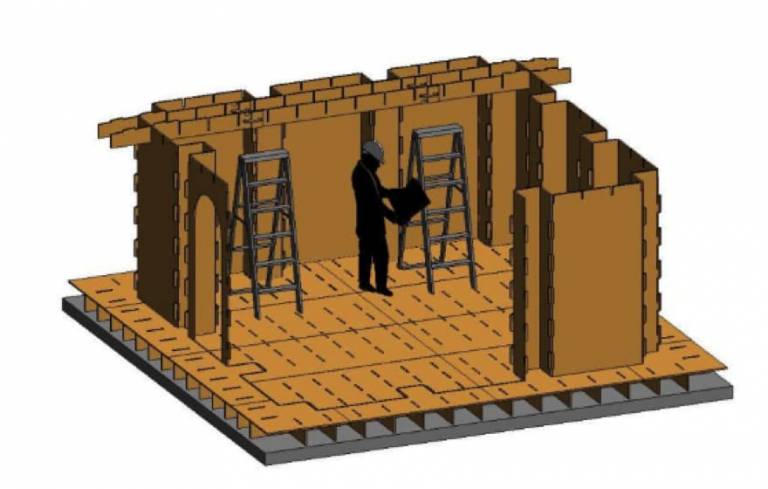CEGE alumna helps our students with their professional skills
8 June 2021
Students on Design and Professional Skills II (CEGE0088) gained real world experience in Building Information Modelling (BIM), thanks to an innovative new collaboration with Multiplex.

Dr James Ford asked Multiplex Head of Digital Tom Loader to partner on a digital construction project, giving students on the module Design and Professional Skills II (CEGE0088) invaluable skills for their future careers through this industry collaboration.
James said: “We were aware that there wasn’t a lot of digital engineering on our course, or much about BIM. This project fills that gap by giving the students hands-on experience of digital construction and the role of data in engineering. We want to prepare students for the workplace by mimicking professional practice as closely as possible, which is why the collaboration with Multiplex is so important. The industry is changing quickly and to have industry expertise from people who are working with these technologies day in and day out is really beneficial.”
The 3D model the students worked with is based on a refugee camp emergency shelter that has been designed by UCL Civil Engineering graduate Sophie Collier (MEng 2018). We asked Sophie a few questions about her involvement with this exciting collaboration.
- How did you get involved in this project?
The NECTO house is an emergency shelter design which I originally developed as part of my final year Integrated Design Project in the CEGE department at UCL. I was working as part of a team with the brief to design a refugee camp to house 50,000 refugees within 6 months, and I developed the NECTO house design in response to the deteriorating living conditions typical of refugee camps and the negative economic and environmental impacts of temporary housing worldwide. The design is a sustainable, rapidly deployable shelter which can be built by unskilled workers, designed to be adapted over time to meet the long-term needs of inhabitants. When James Ford began planning the new BIM project, he got in touch to ask if it could be based around the NECTO house. This gave the students a relatively simple building model to work with, within a challenging design context. I worked together with James and Multiplex to plan and deliver the project.
- What skills does this give students?
Multiplex built a BIM model of the NECTO house in REVIT (BIM software) which the students manipulated and added to, giving them first-hand experience of using BIM as a powerful tool for organising and communicating information.
I think the benefit of using the NECTO house as the basis of the project was that, as well as gaining technical skills about how to use BIM, the students also had the opportunity to engage with the emergency housing crisis, one of the biggest challenges facing the world today.
Instead of just considering construction sequence, maintenance, and material choices in isolation, the students were encouraged to put this into context and to come up with solutions within the constraints of limited funds, rapid construction by an unskilled workforce, and minimising the environmental impact.
The students then had to think about how to communicate the right information to the different stakeholders in an accessible way, from demonstrating the construction methodology to a workforce with a low literacy rate, to presenting a cost plan to the client.
For me, making design decisions that can have a positive impact on the world is what inspires me to continue pursuing a career in engineering. It was great to see the students engaging with some of these ideas in this project, and hopefully they might be inspired to take this approach onwards into their careers!
- How did your degree help prepare you for your current role?
I am now working as a Structural Engineer at Elliott Wood, a structural and civil engineering consultancy with a major focus on ‘engineering a better society’ by reducing the carbon footprint of the construction industry and working to improve the societal impact of the built environment.
I think studying at CEGE UCL was invaluable for me because I was encouraged to think not just about the technical challenges of a given problem, but also to engage with the wider context and impact of design decisions. The focus on project-based learning gave me the opportunity to engage directly with challenging design problems and to innovate as part of a team to find solutions.
 Close
Close

